In hilly central Spain, in Cuenca, on a rural estate with centenary holm oaks and truffle cultivation, we designed a chapel and a house ensemble for the owning family.
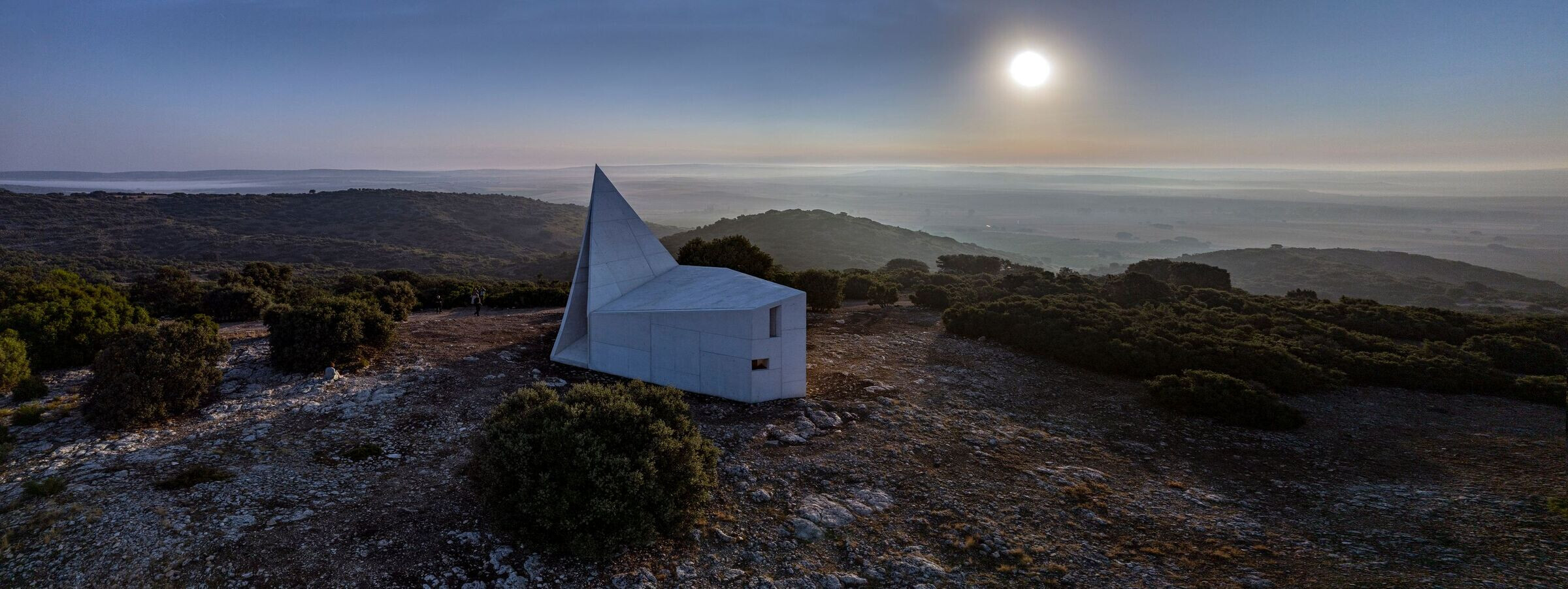
The chapel is developed from a single curved fold, conceptually and in its approach related to Chapel in Valleacerón. These folds needed to be built in reinforced concrete to ensure they would work in a single and correct fashion. Likewise, structure, shape, and space were developed from the same gesture. Light allows the visitor to appreciate the character of the space itself.
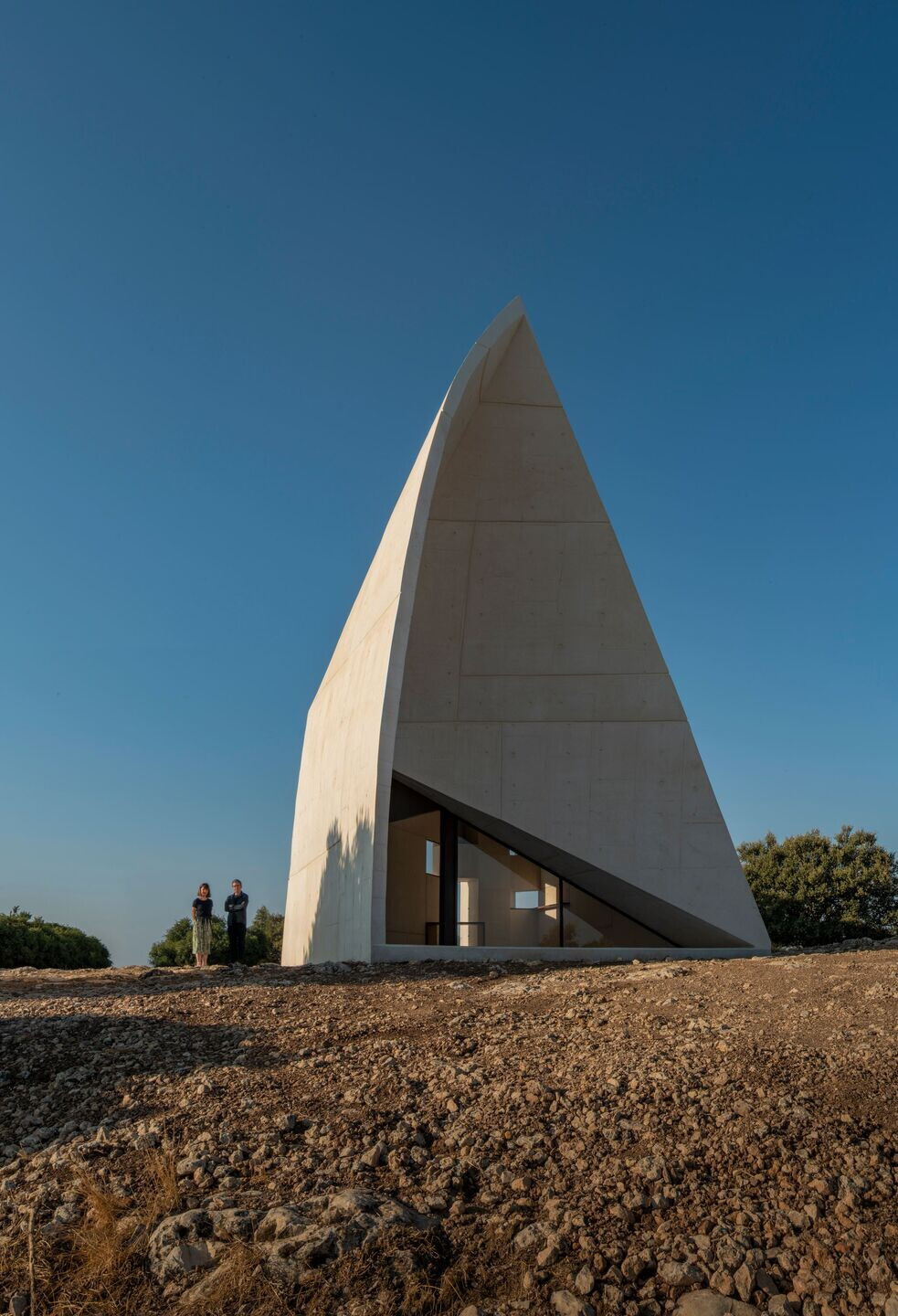
In this project the curved fold is a response to complex external stresses of a topological action. It is not an origami; it is a formal topological expression – in structural equilibrium – that responds to these outer strains. It is conceived with an ample entrance, that welcomes, that leads toward a compressed end.
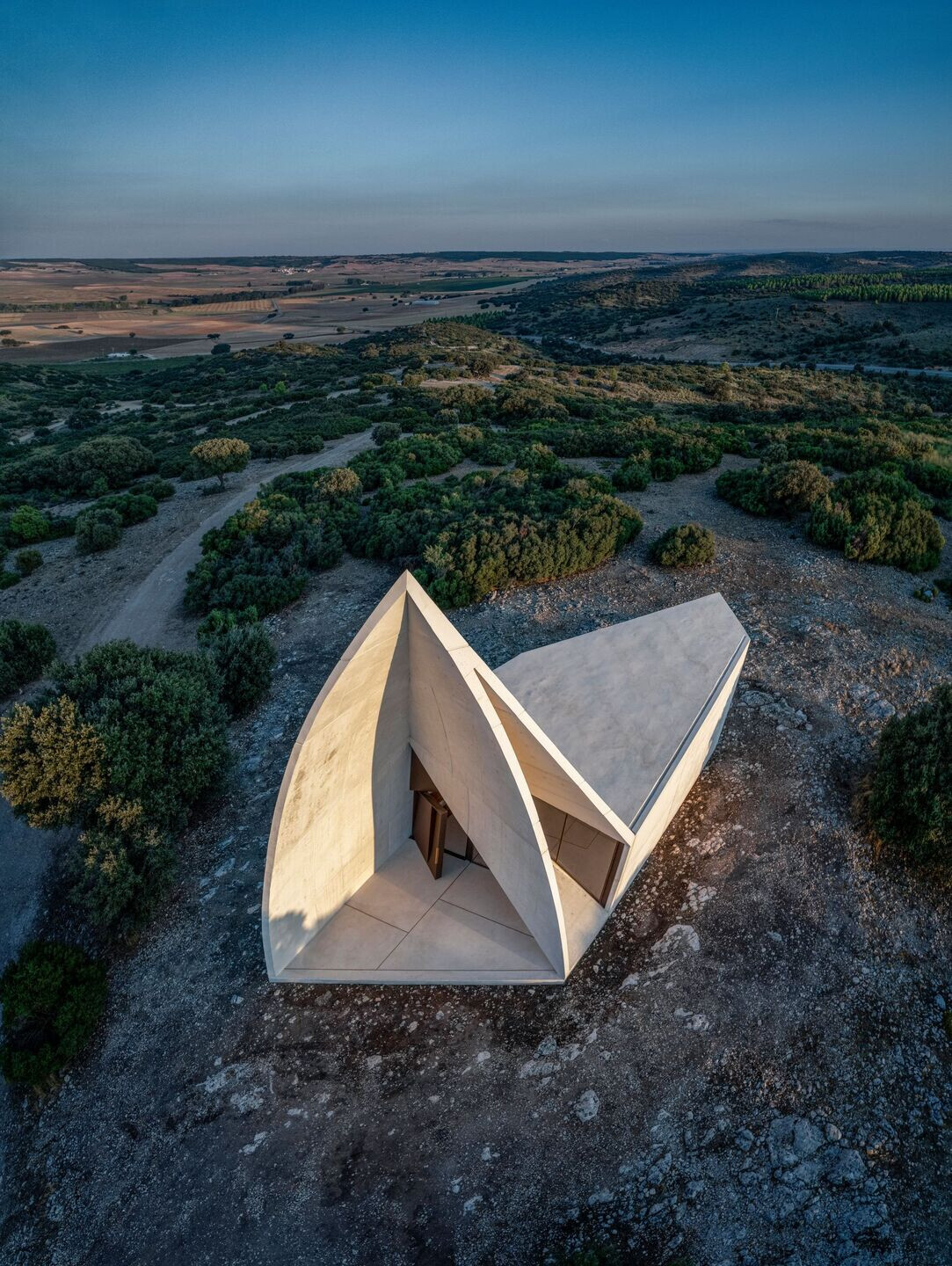
A big hanging cross in concrete pierces the fold and creates light openings facing certain directions, casting different lights throughout the day, modifying the space inside bit by bit, continuously. The spatial experience is opposite of the one conveyed in the Chapel in Valleacerón.
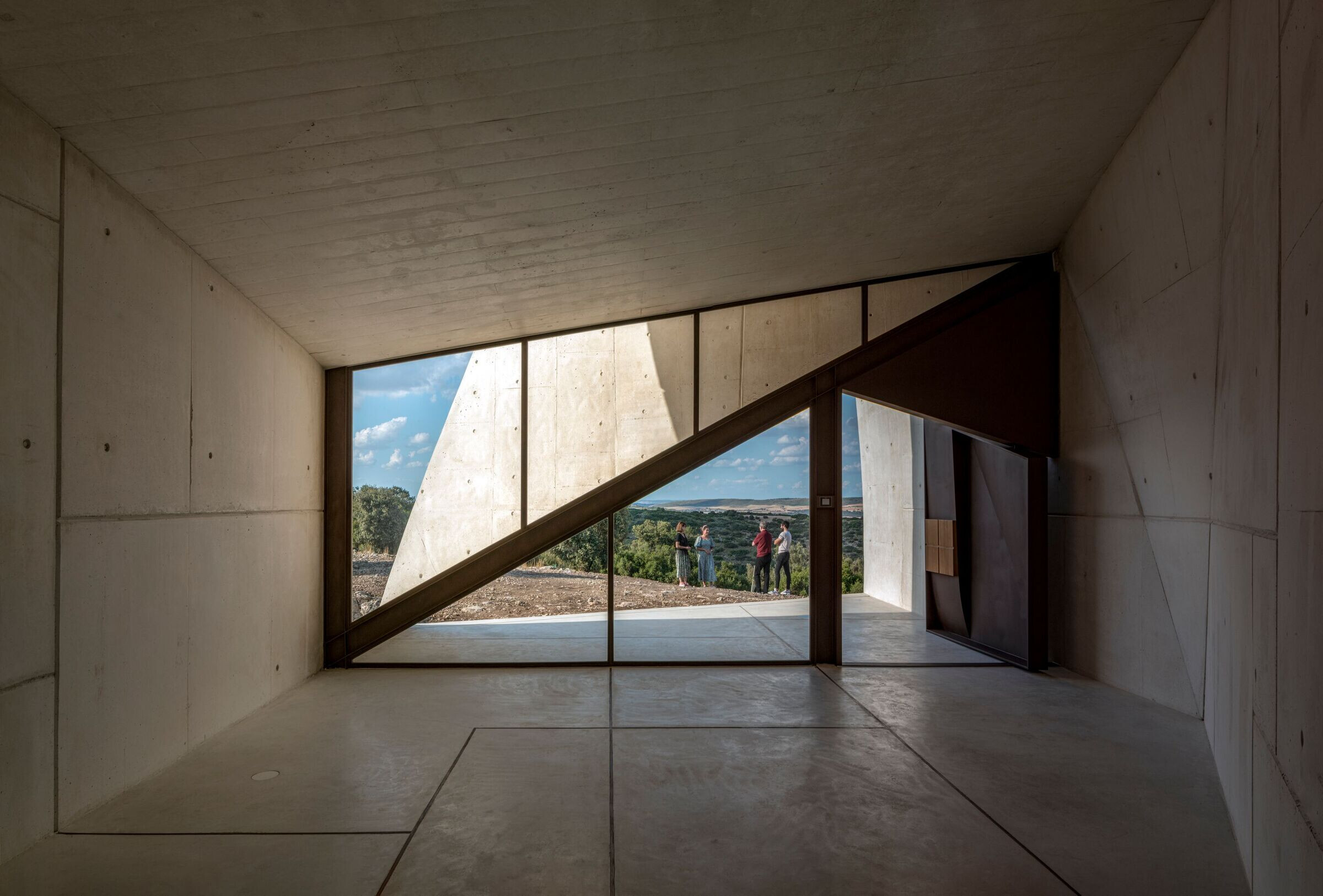
We chose the specific location of the chapel so that it becomes a reference point from both the estate and the road leading to it, which spins and circles around the chapel when approaching.

At the end of the path that leads from the estate’s entrance to the house, stands the chapel. It sits on the top of a small hill, overlooking a valley filled with cherry trees and crop fields, with an ample view of its surroundings.
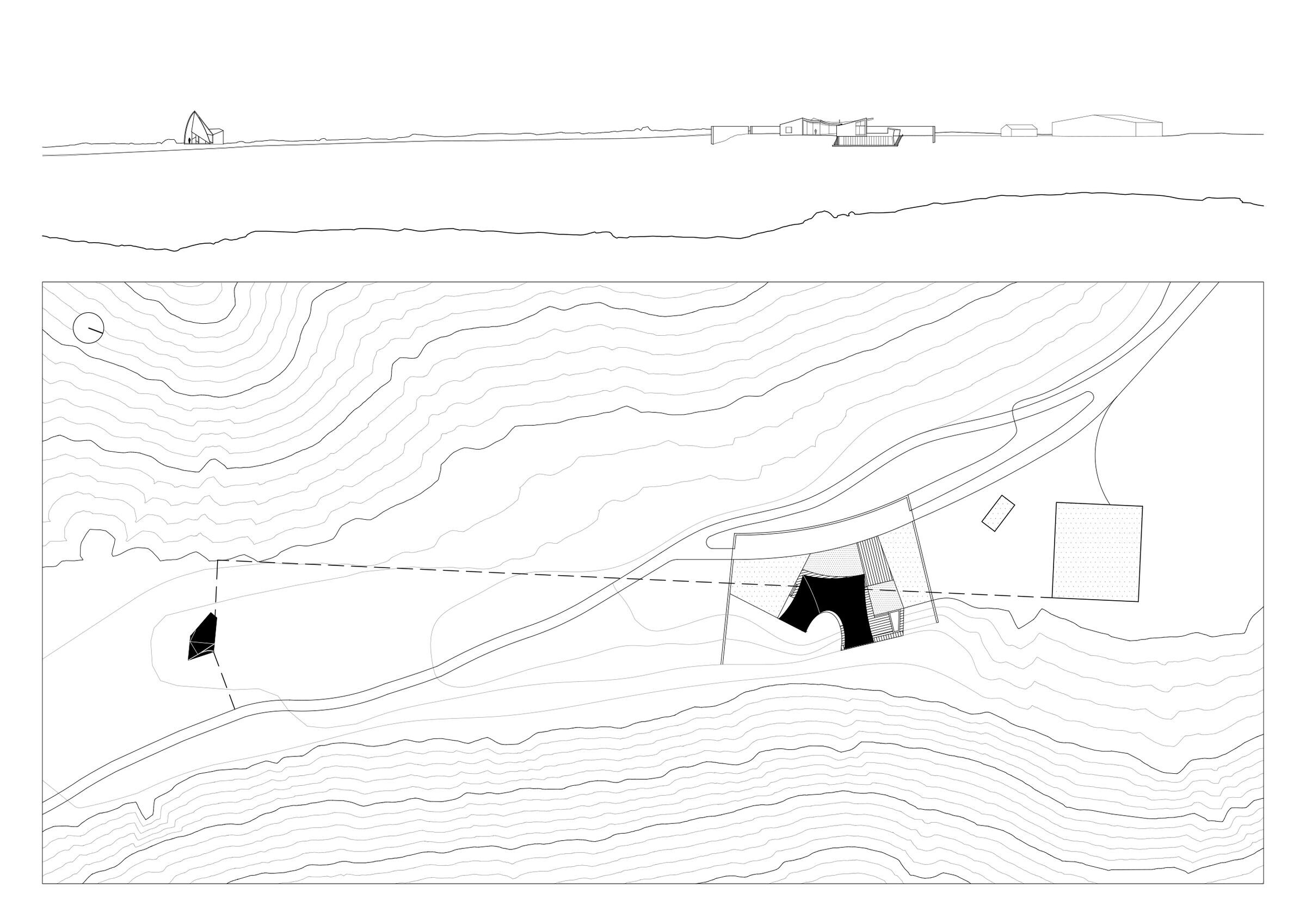
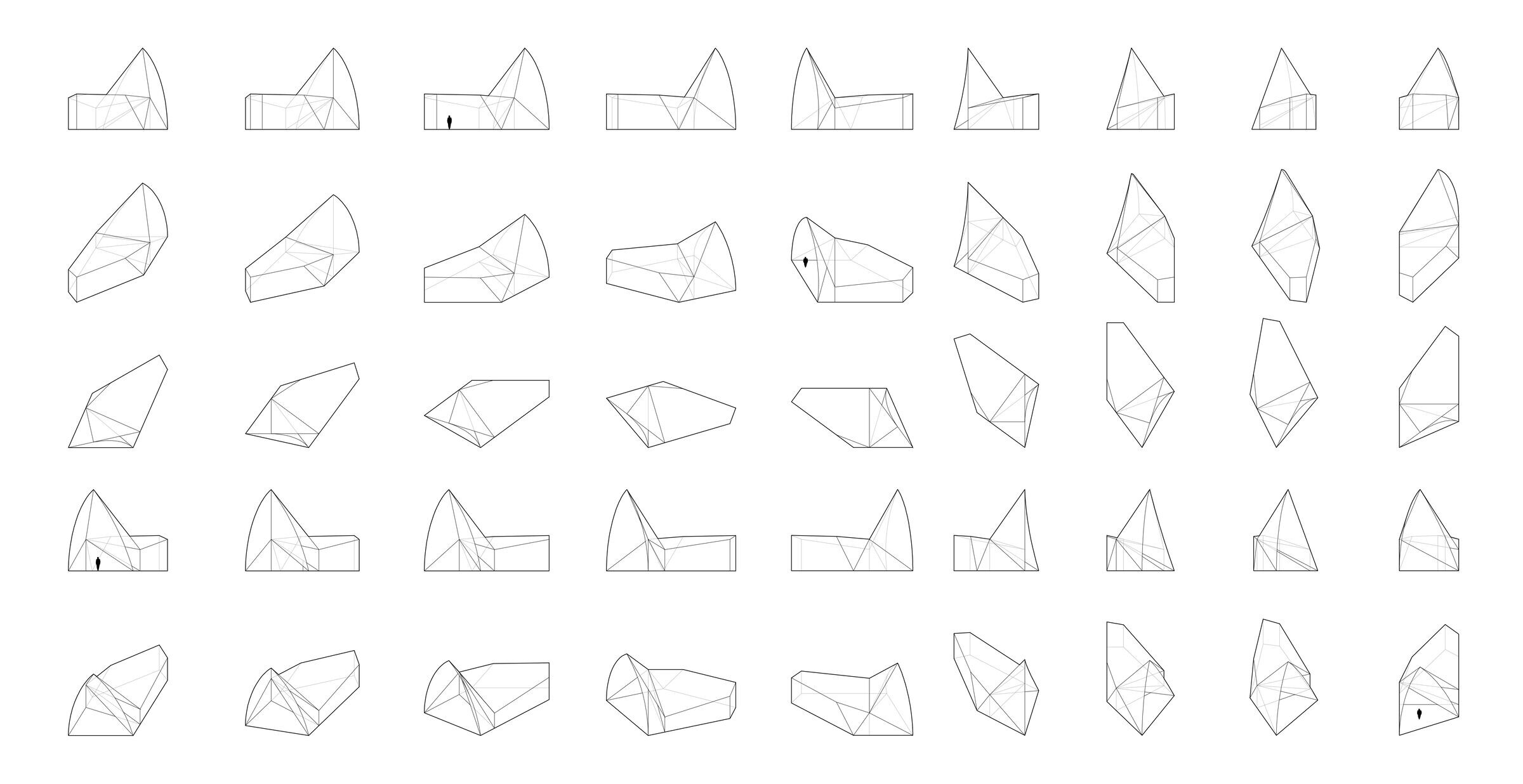
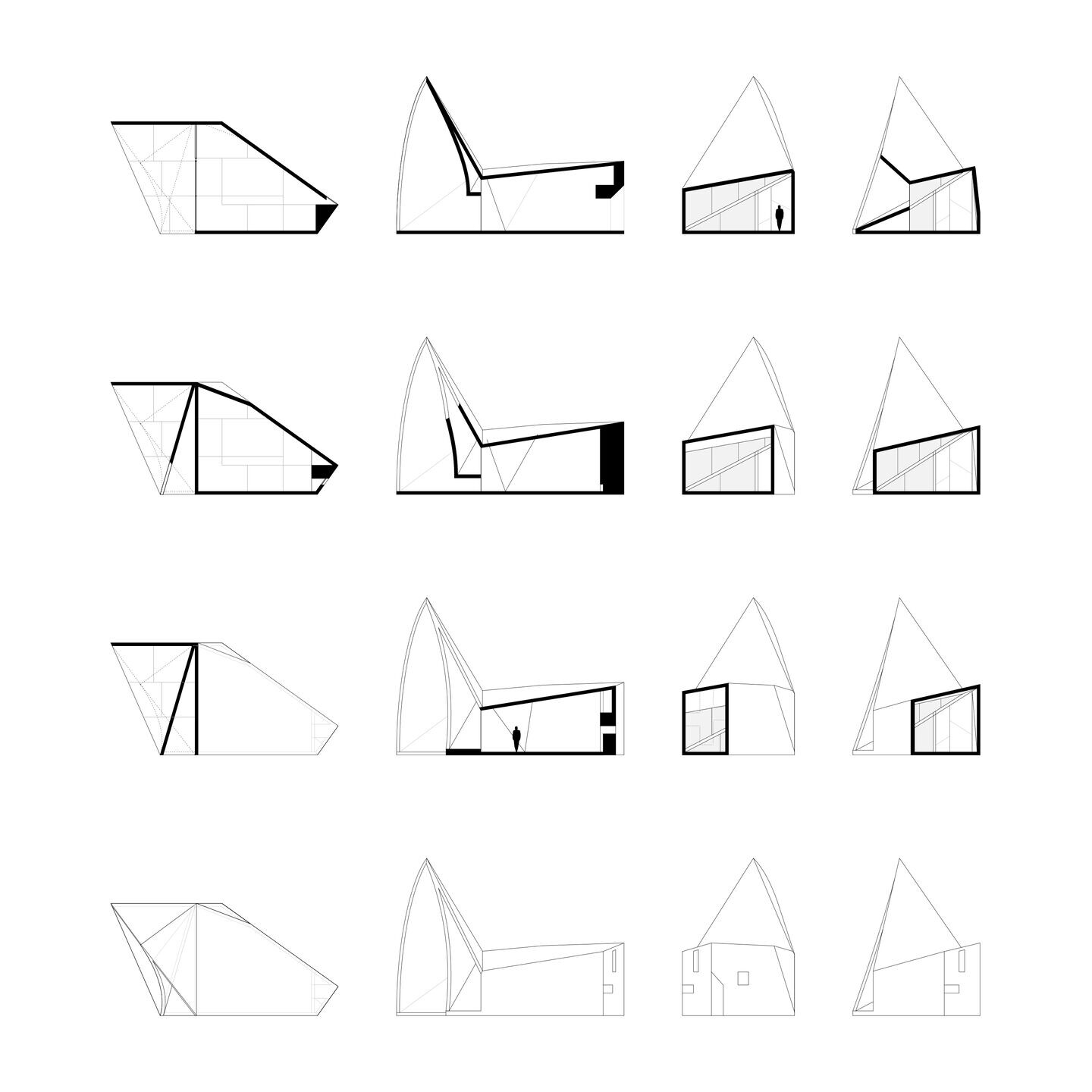
Team:
Project Leader: Victor Alonso
Design team: Daniel G. Marinas, Elena Mira, Félix Bellido, Peio Erroteta, Gerardo Martín
Consultants: Germán Ferrández (building engineer), Bernabeu Ingenieros (structure engineer)
Material Used:
1. Formwork System: Ulma Construcciones
2. Custom-Made Formwork Wedge: Tecmolde




































